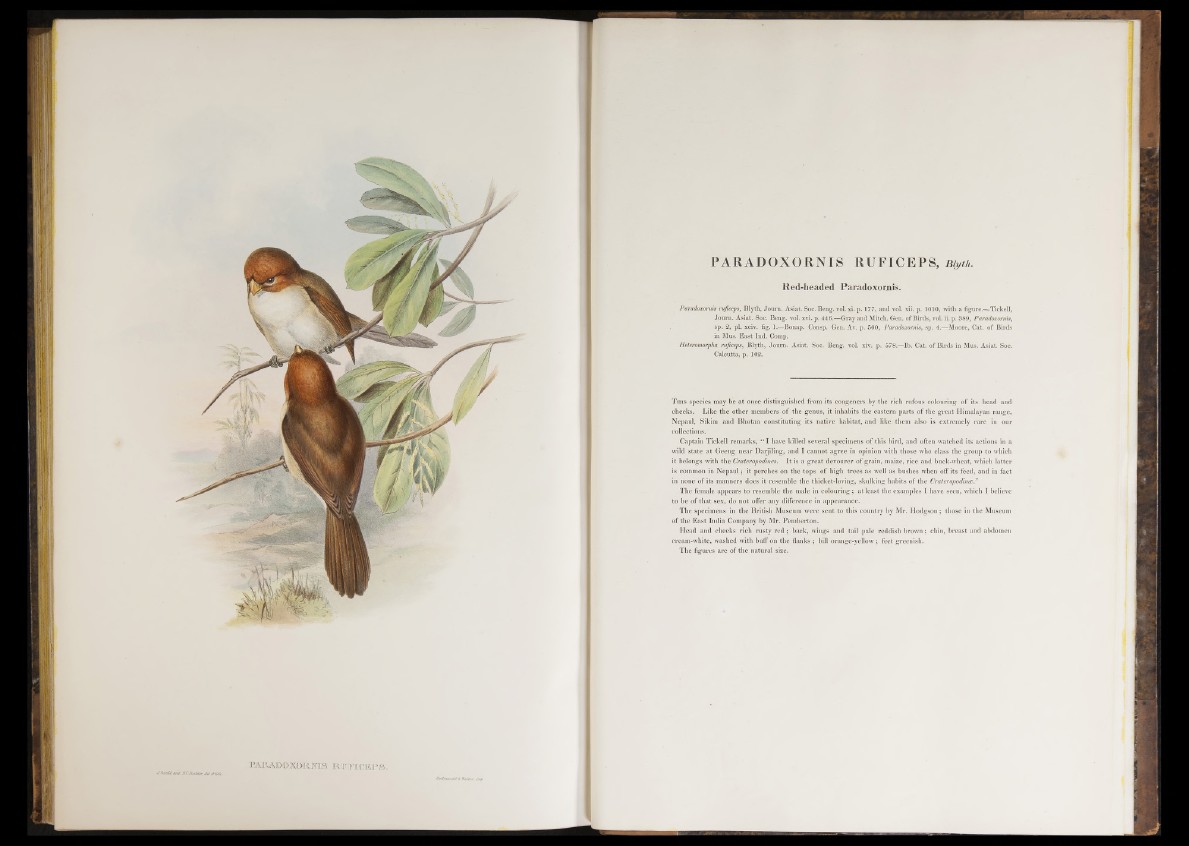
PARADOXORNIS RUFICEPS , my th.
Red-headed Paradoxor.nis.
Paradoxomis ruficeps, Blyth, Journ. Asiat. Soc. Beng. vol. xi. p. 177, and vol. xii. p. 1010, with a figure.— Tickell,
Journ. Asiat. Soc. Beng. vol. xvi. p. 446.—Gray and Mitch. Gen. o f Birds, vol. ii. p. 389, Paradoxomis,
sp. 2, pi. xciv. fig. 1.—Bonap. Consp. Gen. Av. p. 500, Paradoxomis, sp. 4.—Moore, Cat. o f Birds
in Mus. East Ind. Comp.
Heteromorpha ruficeps, Blyth, Journ. Asiat. Soc. Beng. vol. xiv. p. 578.—Tb. Cat. o f Birds in Mus. Asiat. Soc.
Calcutta, p. 102.
T h is species may be a t once distinguished from its congeners by the rich rufous colouring of its head and
cheeks. Like the other members of the genus, it inhabits the eastern parts of the great Himalayan range,
Nepaul, Sikim and Bhotan constituting its native habitat, and like them also is extremely rare in our
collections.
Captain Tickell remarks, “ I have killed several specimens o f this bird, and often watched its actions in a
wild state at Geeng near Darjiling, and I cannot agree in opinion with those who class the group to which
it belongs with the Crateropodines. I t is a great devourer of grain, maize, rice and buck-wheat, which latter
is common in Nepaul; it perches on the tops of high trees as well as bushes when off its feed, and in fact
in none of its manners does it resemble the thicket-loving, skulking habits of the Crateropodince.”
The female appears to resemble the male in colouring; at least the examples I have seen, which I believe
to be o f that sex, do not offer any difference in appearance.
The specimens in the British Museum were sent to this country by Mr. Hodgson; those in the Museum
o f the East India Company by Mr. Pemberton.
Head and cheeks rich fusty r e d ; back, wings and tail pale reddish brown; chin, breast and abdomen
cream-white, washed with buff on the flanks ; bill orange-yellow ; feet greenish.
The figures are of the natural size.